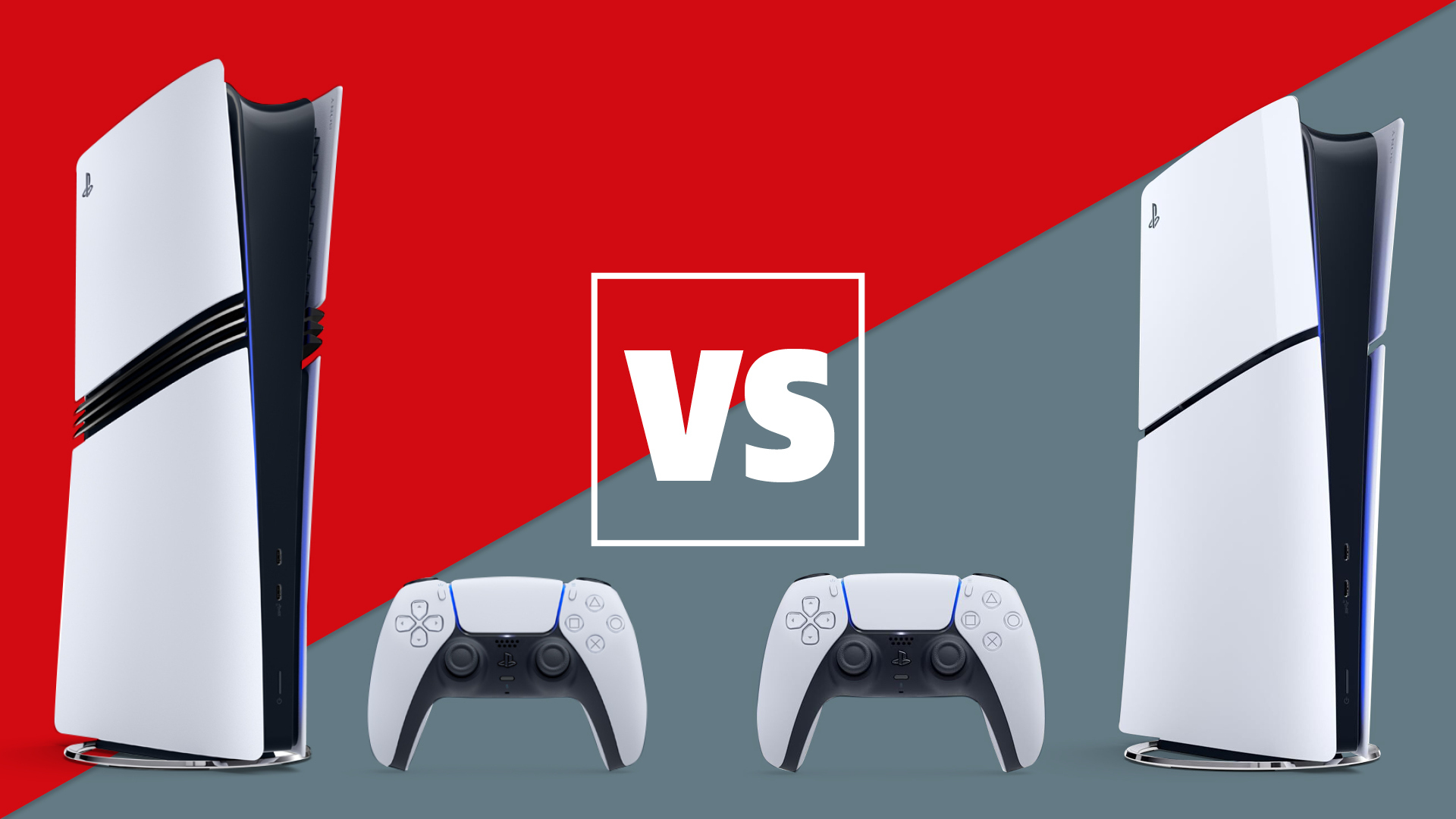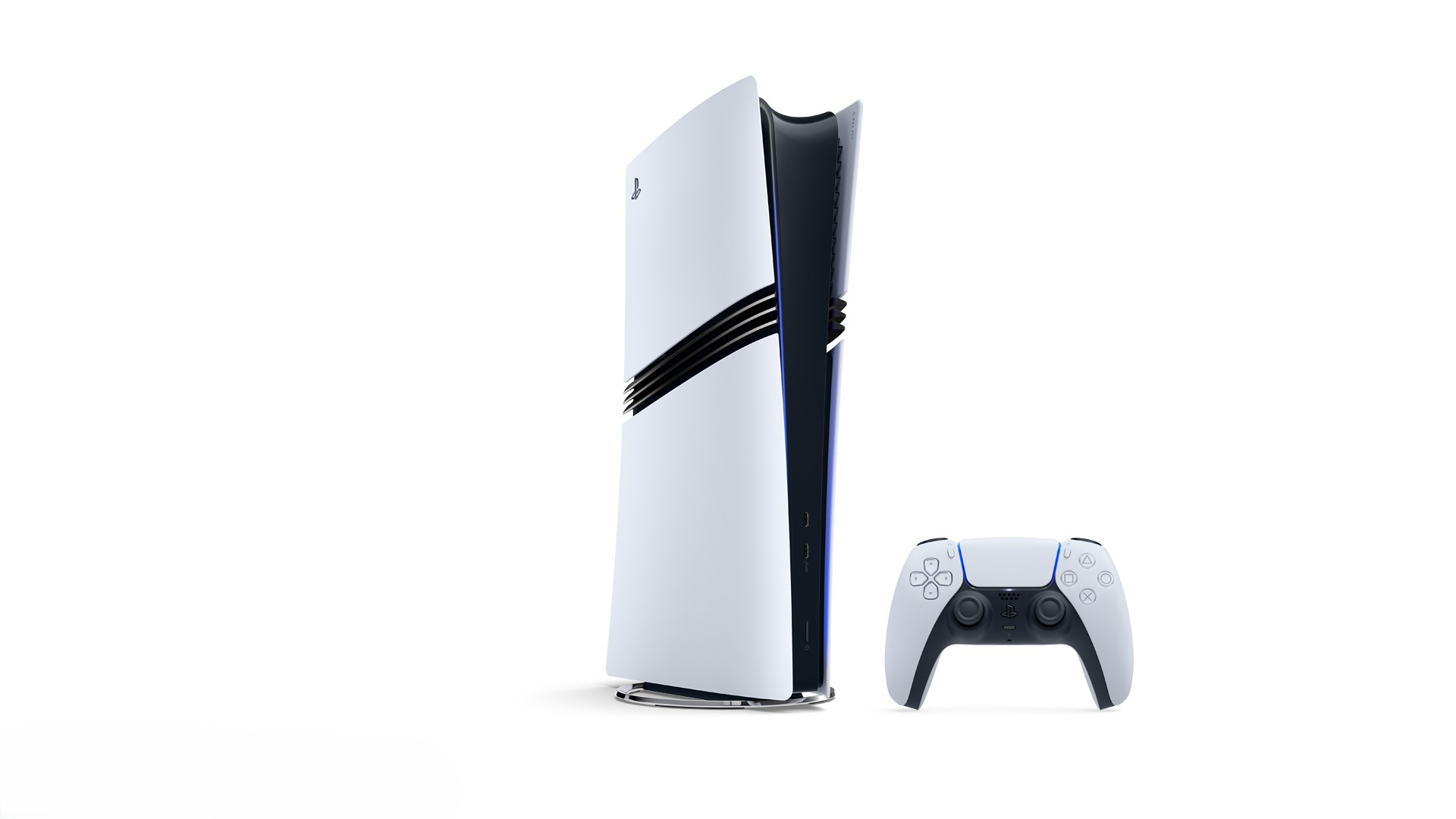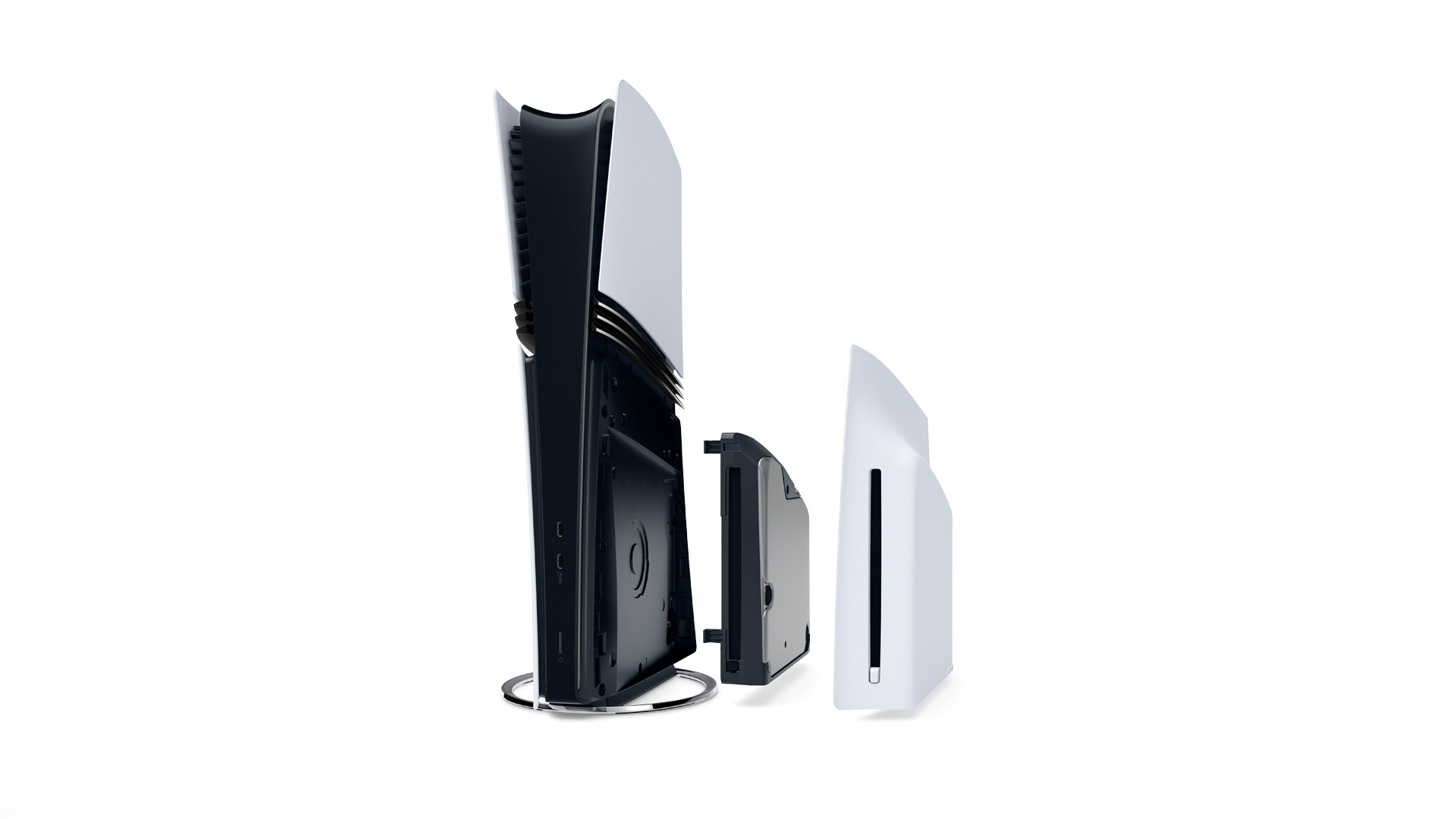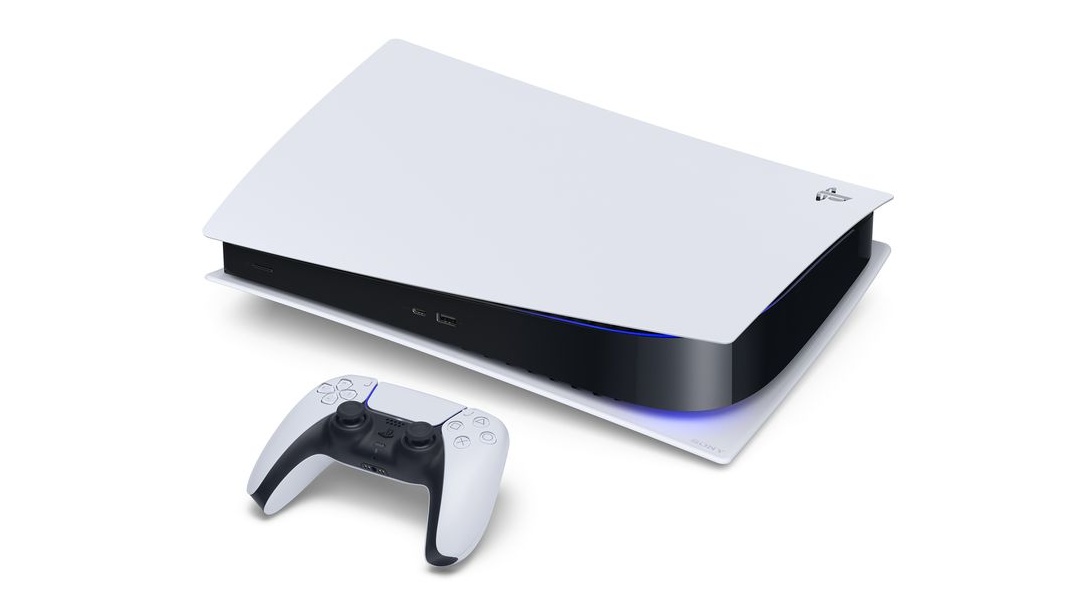
Sony has seen huge success with its PlayStation 5 console, which has become home to some of its most popular franchises, including Spider-Man, The Last of US, God of War and Gran Turismo. It's hard to believe that we're nearly five years into the console's life span; thankfully, Sony reminded us with a new, more powerful iteration of the console.
The PS5 Pro launched last year, with promises of AI graphical upscaling and a more powerful GPU, which should present our favourite games with crisper and more detailed graphics. However, the Pro-suffix also carries a premium where pricing is concerned, which is to be expected considering the new features and performance upgrades.
Unfortunately, we haven't had the chance to review the PS5 Pro as of yet, so our comparison will have to be spec-based until we get a unit of the beefed-up PS5 in-house. We do, however, have plenty of experience with the PS5, so with that reference in mind, here's how the two consoles compare:
- PS5 Pro: Get the Pro for just £659 at EE
- PS5 Slim consoles: Pick up the disc Slim console for under £400
- PS5 Slim bundles: Save up to £90 on Slim bundles at Currys
PS5 Pro vs PS5: price
The PS5 Pro launched on 7 November 2024 with a price tag of £699.99 / $699.99 / AU$1199.95. This represents a significant premium over the standard PS5, which currently retails for £479.99 / $499.99 / AU$799.95. It's worth noting that the PS5 Pro's price is for the digital-only version – if you want the ability to play physical discs, you'll need to purchase the optional disc drive separately for an additional £79 / $79 / AU$159.95.
When you factor in the cost of the disc drive, the total price for a fully-equipped PS5 Pro rises to £778.99 / $778.99 / AU$1359.90. That's a huge jump in price compared to the standard PS5, which we originally tested at £450 / $500 / AU$750, and could make some potential buyers think twice.
The pricing strategy suggests that Sony is positioning the PS5 Pro as a premium option for enthusiasts who demand the very best performance, rather than as a replacement for the standard PS5. For those who are content with the capabilities of the original PS5 though, the significant price difference may be hard to justify, but let’s see what the specs section below has to offer before we make any definitive judgements.
PS5 Pro vs PS5: design

While both consoles share a similar futuristic white and black aesthetic, there are some notable differences in their designs. The PS5 Pro appears to maintain the same height as the original PS5, while adopting the width of the current PS5 Slim model. This could potentially make it a more manageable size for those who found the original PS5 too bulky.
The PS5 Pro retains the distinctive white-and-black colour scheme of its predecessor but introduces additional black stripes across its middle section, giving it a slightly more aggressive appearance. Like the PS5 Slim, the Pro model features removable faceplates, allowing for easy customisation – a feature that wasn't present in the original PS5 design.
In terms of connectivity, the port selection remains largely unchanged. You'll find USB-C ports on the front of the console for convenient controller charging and peripheral connections, while the rear houses USB-A ports and an ethernet jack for wired internet connectivity.
One significant design change is that the PS5 Pro comes as a digital-only console by default. The disc drive is now an optional add-on, which might disappoint those who prefer physical media or have an extensive collection of PS4 discs. However, this modular approach does offer more flexibility for users to choose the configuration that best suits their needs, as long as they don't mind adding a little more bulk to sleek lines of the Pro model.
Without having seen the PS5 Pro in person, it's difficult to make a final judgment on which design is superior. The ability to customise the look with different faceplates is certainly appealing, but some may prefer the cleaner lines of the original PS5. Ultimately, design is subjective, but a more compact build and customisable options provide a reasonable winner for this round.
PS5 Pro vs PS5: specs and features

This is where the PS5 Pro really aims to set itself apart from its predecessor and should justify its hefty price increase the most. On paper, the new console offers some substantial upgrades that should translate to noticeable improvements in gaming performance.
At the heart of the PS5 Pro is an upgraded GPU (aka, graphics card) that Sony claims has 67 per cent more compute units than the one found in the standard PS5. This significant increase in graphical processing power is nicely complemented by 28 per cent faster memory. Overall, we’re looking at around 45 per cent faster rendering for gameplay, which is a stat that, on paper at least, shouldn’t be sniffed at.
The CPU in the PS5 Pro appears to be largely the same 8-core AMD Zen 2 chip found in the original PS5, but with the ability to boost to higher clock speeds when needed. While this might not result in dramatic improvements for CPU-bound tasks, the ability to reach up to 3.85GHz (compared to the PS5's 3.5GHz) could help in certain scenarios.
In terms of storage, the PS5 Pro comes equipped with a 2TB SSD, doubling the capacity of the 1TB drive found in the PS5 Slim (and offering even more space than the 825GB SSD in the original PS5 model). This extra storage should be a welcome addition for those with large game libraries and will save multi-title gamers the hassle of constantly having to delete titles to make room for new ones.

Connectivity sees an upgrade too, with the PS5 Pro supporting the latest Wi-Fi 7 standard, compared to the Wi-Fi 6 innards of the regular PS5. This should lead to faster download speeds and more stable online gaming experiences, though you'll need a Wi-Fi 7 router to take advantage of the more recent tech.
Both the standard and Pro versions of the PS5 come bundled with the DualSense wireless controller. While it would have been nice if Sony opted to bundle its premium DualSense Edge controller in with the more expensive PS5 Pro, we have very little to complain about regarding this controller, as it's feature-packed, responsive and comfortable in the hand. The adaptive triggers and haptic feedback add an enhanced sense of immersion, and it can even pass through the PlayStation's spatial audio format to headphones via the 3.5mm headphone jack.
Another area where both consoles remain on equal footing is in their support for the PSVR2 virtual reality headset. If VR gaming is a priority for you, either console should serve your needs.
While these specifications certainly paint an impressive picture for the PS5 Pro, it's important to remember that real-world performance can often differ from what's promised on paper. We'll need to wait for our full review to determine just how significant these upgrades are in practice.
PS5 Pro vs PS5: performance

We can't categorically state just how much better the PS5 Pro is until we take it for a spin, but it's safe to assume that there will be improvements over the standard model, given the extra power and features on offer.
The fast CPU and graphics card, combined with more advanced ray-tracing (up to three times better, according to Sony), should provide a smoother, more immersive gaming experience. This is particularly likely if you take into account the PS5 Pro's new AI-powered upscaling technology called PlayStation Spectral Super Resolution (PSSR). This feature aims to improve image quality by intelligently upscaling lower-resolution content, potentially allowing games to run at higher frame rates without sacrificing visual fidelity.
The PS5 Pro also introduces a feature called PS5 Pro Game Boost. Similar to the PS4 Pro's boost mode, this promises improved performance for over 8,500 backwards-compatible PS4 games, even without specific optimisation from developers. This could breathe new life into older titles, potentially offering smoother frame rates or higher resolutions for games that may not receive dedicated PS5 Pro patches.
When it comes to AV prowess, the PS5 Pro, like the regular model, technically supports 8K output, although it's unclear at this stage how many games (if any) will actually render at this ultra-high resolution. As with the PS5, it could be more of a case of stating that both consoles are technically compatible with 8K displays — it's just that they likely don't have the power to provide a true 8K gaming experience. It should also be said that there's hardly any 8K content out there to take advantage of, with no major streaming platform supporting 8K content at the time of writing. In short, the 8K claim is more likely for future-proofing and potential media playback capabilities.
Like the regular PS5, the PS5 Pro supports HDR10, though there's once again no sign of Dolby Vision. And while Dolby Atmos is also present on both consoles, it once again seems limited to gaming of playback via the disc drive. Apps like Netflix and Amazon Prime Video still don't have Dolby Vision support for either of Sony's consoles from what we can gather, though we'd like to think they will one day.
We found the original PS5 to be a "capable streamer and disc-player" that was more than a match for the Xbox Series X at the time. We did think subtlety of shading and motion handling were dealt with more comprehensively by the best 4K Blu-ray players, though, so whether the more powerful processing chops of the Pro can improve this and give a general bump to picture quality remains to be seen
We liked the original PS5's audio from its Blu-ray drive, praising its "muscular, room-filling sound" which delivered "good clarity and well-placed sound effects". We also enjoyed the console's bespoke 3D audio system which we tried with different pairs of headphones including Sony's own PlayStation Pulse 3D Wireless Headset.
We found its Tempest Engine "delivers open, spacious and atmospheric sound with good placement of effects and a convincing sense of three-dimensionality". Assuming Sony hasn't tinkered too much under the hood, we expect more of the same from the PS5 Pro if not slightly better given its increase in processing horsepower. Of course, we'll have to wait until we have the console in our test rooms to find out for ourselves.
PS5 Pro vs PS5: early verdict

On paper, the PS5 Pro presents itself as a significant upgrade over the standard PS5, offering substantial performance gains that should result in better-looking games with potentially higher frame rates. For gamers who demand the absolute best visual fidelity and performance, it could be a tempting proposition.
However, the considerably higher price point – especially when factoring in the optional disc drive – means it won't be the right choice for everyone. The standard PS5 remains an excellent console that can deliver stunning visuals and smooth gameplay across a wide range of titles, and for many gamers, it will likely remain the sweet spot of price and performance. For AV fans, the additional cost of the disc-drive might put some buyers off as could legacy issues which still haven't been addressed such as the lack of full Atmos support through the PS5 Netflix app.
Ultimately, the choice between PS5 and PS5 Pro will come down to your budget, gaming priorities, and how much you value those extra performance gains. If you're the type of gamer who always wants the best possible experience and you have the budget to match, the PS5 Pro could be a worthwhile investment. On the other hand, if you're satisfied with the performance of the standard PS5 or you're working with a tighter budget, the original model still offers exceptional value.
We'll update this comparison with more definitive conclusions once we've had the opportunity to fully review the PS5 Pro. In the meantime, both consoles promise to deliver excellent gaming experiences – it's just a matter of how much you're willing to spend to push those boundaries even further.
MORE:
Read our full Sony PS5 review
And our full Xbox Series X review
And PS5 Pro: all the rumours on its release date, price and specs







